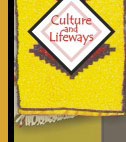 Heritage Community Foundation Presents
Heritage Community Foundation PresentsAlberta Online Encyclopedia
 |
 |
||
|
|
 |
Home | About Us | Contact Us | Partners | Sitemap |
|
|
|
 |
||
   |
|||
|
Hunting
Charles McKenzie, who was in charge of a small post near Lac Seul, married Mary McKay, a daughter of Nor'Wester William McKay and Josette Latour. Known for her industriousness, Charles wrote his children in the early 1850s about their mother's hunting prowess.
Until Europeans' arrival, Natives did not have metal tools or devices such as steel traps. When steel traps were introduced, Native trappers quickly learned this technology. Iroquois freemen, in particular, used steel traps aggressively and earned a successful reputation with the fur companies. Native people invented a variety of methods for killing buffalo. Disguised under buffalo hides, individual hunters could stalk a straggler, then when they got close enough they could spear or shoot the animal. As seen by Peter Rindisbacher's painting 'Indian Hunters. Pursuing the Buffalo in the Early Spring' (1824 or earlier), Natives wearing snowshoes could pursue a struggling buffalo. The Assiniboine drove small herds of buffalo into enclosures or pounds. They accomplished this by driving stakes among the trees of a bluff. Trapped, the buffalo could be shot at close quarters. The Blackfoot practiced stampeding buffalo, by the hundreds, over cliffs. Buffalo runners would locate a herd. Some band members, including women and children, would drive the buffalo herd towards a jump by shouting and waving. Other band members waited below to finish off any survivors. As a rule, Native women were responsible for skinning, butchering, carrying back carcasses of large game to camp, and then cooking the kill. Buffalo provided meat, fat, leather, sinew, and raw hide cords. Hides were made into robes and were used as tipi covers. Buffalo bones were used as awls and needles.
|
Hunting and Fishing |
||
|
|
|||
 |
 |
 |
 |
For more on Métis Alberta, visit Peel’s Prairie Provinces.
